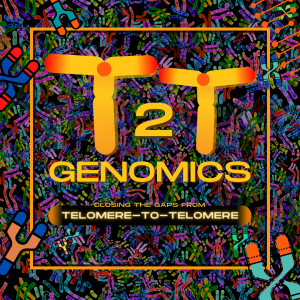Launch of the T2T Series: Closing the Gaps from Telomere-to-Telomere

GigaScience’s T2T Series has now launched, with our first papers showcasing new Telomere-to-Telomere methods and genomic data sets.
While the first draft of the Human Genome was declared complete in April 2003, it took a further two decades for the publication of the first complete, gapless sequence of a human genome in March 2022. The work was done by the Telomere to Telomere (T2T) consortium, which was a years-long global collaboration led by geneticists at UC Santa Cruz, University of Washington, and the National Institutes of Health. This T2T approach has now moved onto to other species’ genomes (for example see the recently published first outputs from the T2T-Primates project of the consortium), and what was originally just the name of the consortium has now become a badge for a certain level of quality that enables new understanding of biology and improvements in genome annotation.
With the interest in this new level of genome sequence, the new data and tools coming from this research, and the new biological insight coming from previously ignored corners of the genome, GigaScience is pleased to announce the launch of new thematic series covering T2T Genomics. This T2T series providing a home for these discussions, updated datasets, and showcasing of the new technologies and methods that have driven this new standard in genomics.
The first batch of papers are now out and demonstrate the scope of the series, and rapid development of this field. With an interesting balance of new methods and papers presenting new data. From new tools for mapping and visualization of the low-complexity regions that previously were too challenging to assemble, to new computational approaches to sort and assemble equally challenging sex-limited chromosomes. And following our first fully-resolved genome of the protozoal agent Cryptosporidium parvum, we’ve now published much longer and difficult to assemble plant genomes such as the cupuassu tree (Theobroma grandiflorum) and the Chinese medicine plant Qianhu (Peucedanum praeruptorum Dunn). Providing novel molecular insights into the many bioactive and commercially important genes . With many more plant and animal species genomes currently under review, watch this space for the final chapter of these reference genomes to be published.
We would like to thank our Guest Editors Jue Ruan (Chinese Academy of Agricultural Sciences) and Fritz J Sedlazeck (Baylor College of Medicine), who both have hands-on involvement in this rapidly moving field, and have helped draw up guidelines of what can be considered for the series.
Please contact us if you have work of interest you would like to discuss, or you can submit through our submission system and make a note of this series in the covering letter.
Further Reading:
Nurk S, et al. The complete sequence of a human genome. Science. 2022 Apr;376(6588):44-53. doi: 10.1126/science.abj6987.
Menon VK, et al. Fully resolved assembly of Cryptosporidium parvum. Gigascience. 2022 Feb 15;11:giac010. https://doi.org/10.1093/gigascience/giac010
Silva JM et al. AlcoR: alignment-free simulation, mapping, and visualization of low-complexity regions in biological data. Gigascience. 2023 Dec 28;12:giad101. https://doi.org/10.1093/gigascience/giad101
Wang XB et al. An effective strategy for assembling the sex-limited chromosome. Gigascience. 2024 Jan 2;13:giae015. https://doi.org/10.1093/gigascience/giae015
Bai M et al. The telomere-to-telomere (T2T) genome of Peucedanum praeruptorum Dunn provides insights into the genome evolution and coumarin biosynthesis. Gigascience. 2024 Jan 2;13:giae025. https://doi.org/10.1093/gigascience/giae025
Alves RM et al. Genomic decoding of Theobroma grandiflorum (cupuassu) at chromosomal scale: evolutionary insights for horticultural innovation. Gigascience. 2024 Jan 2;13:giae027. https://doi.org/10.1093/gigascience/giae027
T2T Series: Closing the Gaps from Telomere-to-Telomere https://academic.oup.com/gigascience/pages/t2t-series-closing-the-gaps-from-telomere-to-telomere